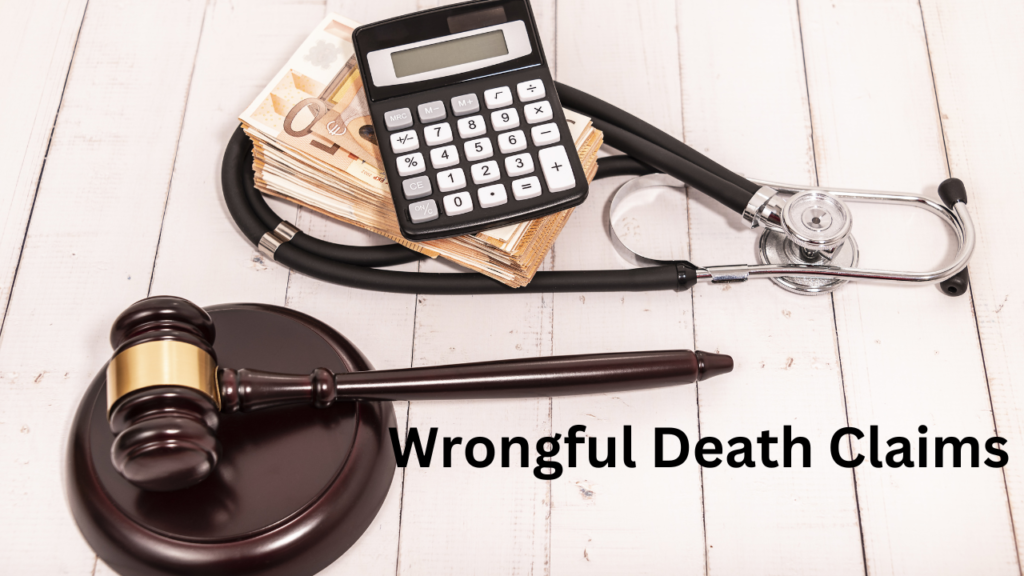Introduction to Wrongful Death Claims
The tear in the fabric of a family from the loss of a loved one is one of life’s most heart-wrenching occurrences, mainly when the death is untimely and arises from preventable circumstances. A wrongful death legal claim addresses situations where an individual’s death is the result of another’s negligence or intentional harm. This field of law aims to provide the deceased’s survivors with fair retribution for their loss, although it is not without its complexities. To quote a poignant study on this subject, ascertaining the non-economic impact on society requires deep empathy and understanding. A reliable ally in this challenging journey can be found in the form of experienced wrongful death attorneys who specialize in navigating these emotional waters with a deft hand, ensuring families receive the justice and closure they merit.
As families find themselves grappling with the tangible loss of companionship and the potential financial instability that the untimely death may precipitate, wrongful death claims stand as a vital mechanism for securing their future. It’s a legal recourse that serves a dual purpose: addressing the immeasurable emotional void while also managing the pragmatic aspects of losing a contributing member of the family. Understanding the fundamentals of wrongful death legislation is the initial step in this vital process.
Who Can File a Wrongful Death Claim?
Entering the realm of wrongful death attorneys, an essential question arises: who is entitled to step forward and file a claim? This prerogative varies by jurisdiction but primarily lies with the deceased’s closest relatives. Depending on the state’s statute, spouses, children, and sometimes extended family members like parents or siblings might have legal standing. Each state’s wrongful death statute elucidates this hierarchy of claimants, underscored by unique nuances in the law. It’s imperative to comprehend these distinctions as they determine who may pursue justice and secure compensation for both the tangible and intangible losses incurred due to their loved one’s demise. The variations in legal systems across locales necessitate precision and a clear understanding of regional legislation governing such claims.
Types of Damages in Wrongful Death Cases
Seeking compensation after a wrongful death turns into a therapeutic endeavour for the surviving family members. Economic damages encompass those calculable losses like burial expenses, loss of the deceased’s expected earnings, and medical costs incurred before death. The quest for non-economic damages delves into the more subjective sphere of compensating for loss of companionship, pain, and suffering or loss of parental guidance. Then there are punitive damages, rarely awarded, which serve as society’s reprimand for the defendant’s egregious actions or omissions. These are intended not just to compensate but to prevent and deter similar deeds by others. As one shuffles through the maze of damages, the value placed on these different losses depends not only on the evidence and effective legal strategy but also on the social mores and jury perceptions that vary from place to place.
The Role of Negligence in Wrongful Death
Negligence is an elusive creature in legal realms, often the crux on which wrongful death actions hinge. At its core, negligence transpires when an entity’s failure to exhibit due care leads to another’s harm or, in these severe instances, death. The primary objective of legal proceedings is to prove that the party at fault owed a duty of care to the deceased, which was breached through their actions or lack thereof, resulting in a catastrophic outcome. The gambit proves such linkages, leveraging evidence that outlines how the misstep or oversight by the defendant resulted in a life lost. This legal doctrine is pivotal for securing just compensation and affirming society’s commitment to individual responsibility and care for one another.
The Time Limit for Filing Claims for Wrongful Death
Amid the grieving and adjustment to a life-altering loss, time is of the essence in the legal world. The statute of limitations represents an unrelenting clock, setting finite boundaries on when a wrongful death claim may be initiated. This framework varies geographically, yet it underscores the necessity of swift action to preserve legal recourse. While the typical window may extend from one to a few years post-incident, certain conditions can modify this timeline. These include factors such as the deceased’s minor status at the time of death or the discovery of new evidence attributing their death to the defendant’s actions. Awareness of such exceptions can be a beacon of hope for families who may be nearing their time limit but still have a chance to seek justice.
The Legal Process: From Filing to Verdict or Settlement
Embarking on a wrongful death lawsuit is an arcane voyage that begins with the drafting and filing of a complaint in the judicial arena. The litigation mosaic entails various phases, such as discovery — where legal parties collect and scrutinize pertinent evidence — and potentially a jury trial. Yet, many of these cases find resolution outside the courthouse through settlements that provide a more private and controlled closure. Settlements can prevent the unpredictable whirlwind of a trial and the public airing of private grief. Opting for settlement negotiations or pushing forward to a court verdict requires careful consideration of the case’s specific dynamics and the family’s emotional well-being.
The Role of a Wrongful Death Attorney
At the heart of this legal labyrinth stands the wrongful death attorney, a guide and advocate who bears the torch for bereaved families as they traverse unfamiliar territories. This specialized lawyer amalgamates empathy with legal acuity, standing shoulder-to-shoulder with clients amidst their darkest hours. This earnest alliance is generally cemented through contingency fee arrangements, ensuring that the lawyer’s compensation is contingent on achieving a successful outcome for the family. Shouldering the watchtower for financial reparation and the assertion of accountability, these legal professionals are often the linchpin of solace and justice for the aggrieved family.
Case Studies: Wrongful Death Claims in Practice
The exploration of case studies provides a tangible grasp of wrongful death jurisprudence. Previous verdicts and settlements cast light on the precedents that shape legal strategy and outcomes, offering a real-world understanding of how courts dovetail legal principles with the nuances of each case. These narratives teach valuable lessons: from the clarity of post-mortem evidence to the sway of societal norms on jury decisions, each account enriches our comprehension of the justice system’s application in the realm of wrongful death.
Coping with Grief: Support Resources for Families
Wrongful death lawsuits reach beyond mere legal battles, brushing the raw edges of human sorrow. Amidst this emotional storm, mental and communal support is paramount. Resources abound, from therapists specializing in grief management to community support groups, providing spaces for shared experiences and understanding. The healing journey is arduous, eclipsing the patience and strength of the family involved, yet these support systems stand as beacons of hope and recovery. It is also crucial to delve into scholarly reviews such as Understanding the Wide-Ranging Consequences of Fatal Negligence, which can offer an evolved perspective on the entire spectrum of wrongful death’s impact on individuals and society at large.
Preventative Measures to Avoid Wrongful Deaths
The memory of the departed and lessons drawn from wrongful death claims should fuel efforts to prevent similar misfortunes in the future. Increasing awareness about safety measures, robust enforcement of workplace regulations, and societal activism for enhanced laws are all part of a collective barrier against negligence. Tangible change often emerges from the crucible of past miseries – a heartfelt testament to the value of life and the immutable responsibility we all share in safeguarding it. Furthermore, eloquent resources from the judicial domain offer a clear-eyed view of how legal professionals frame and scrutinize wrongful death actions, enlightening practitioners and families endeavouring to chart these turbulent waters.












